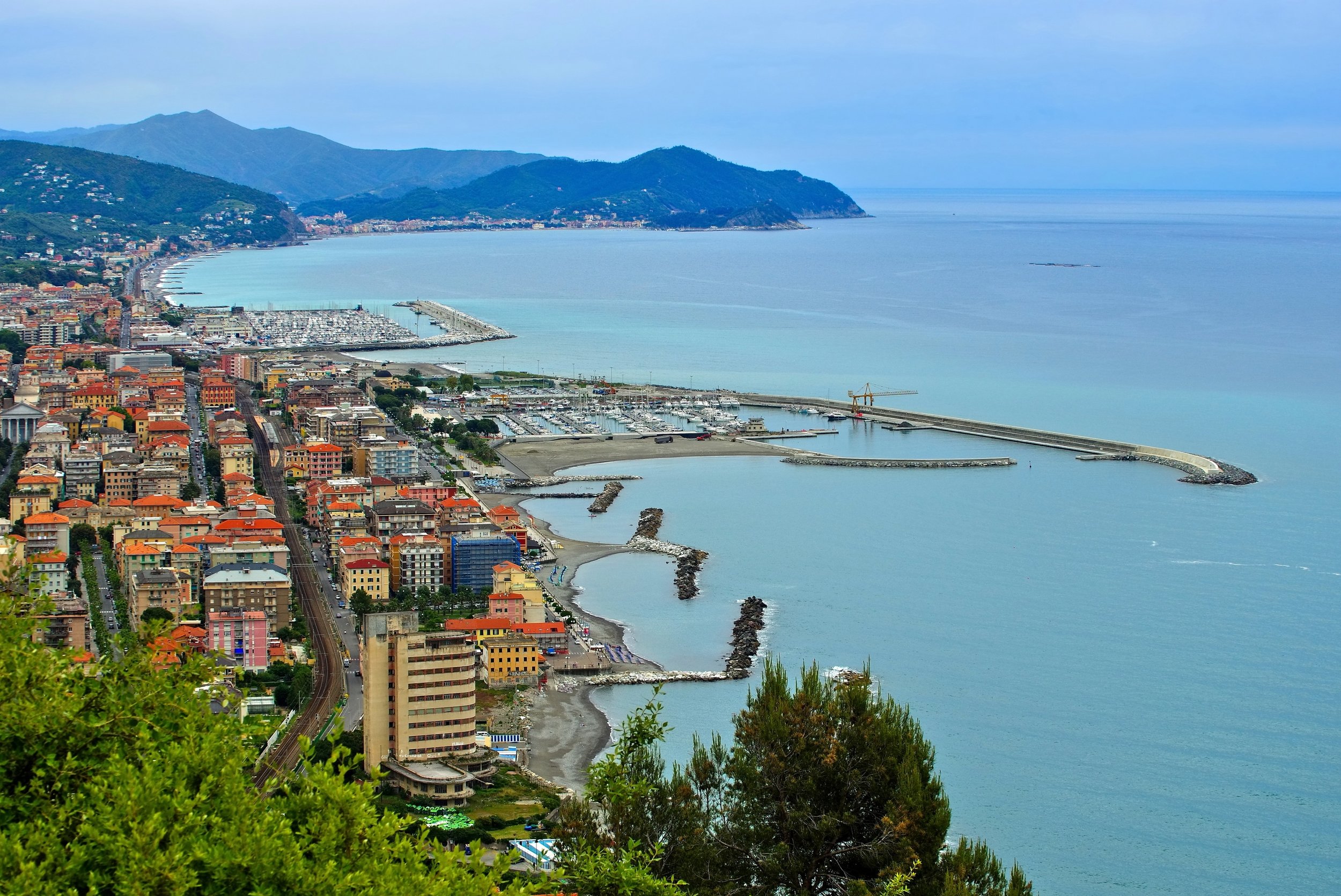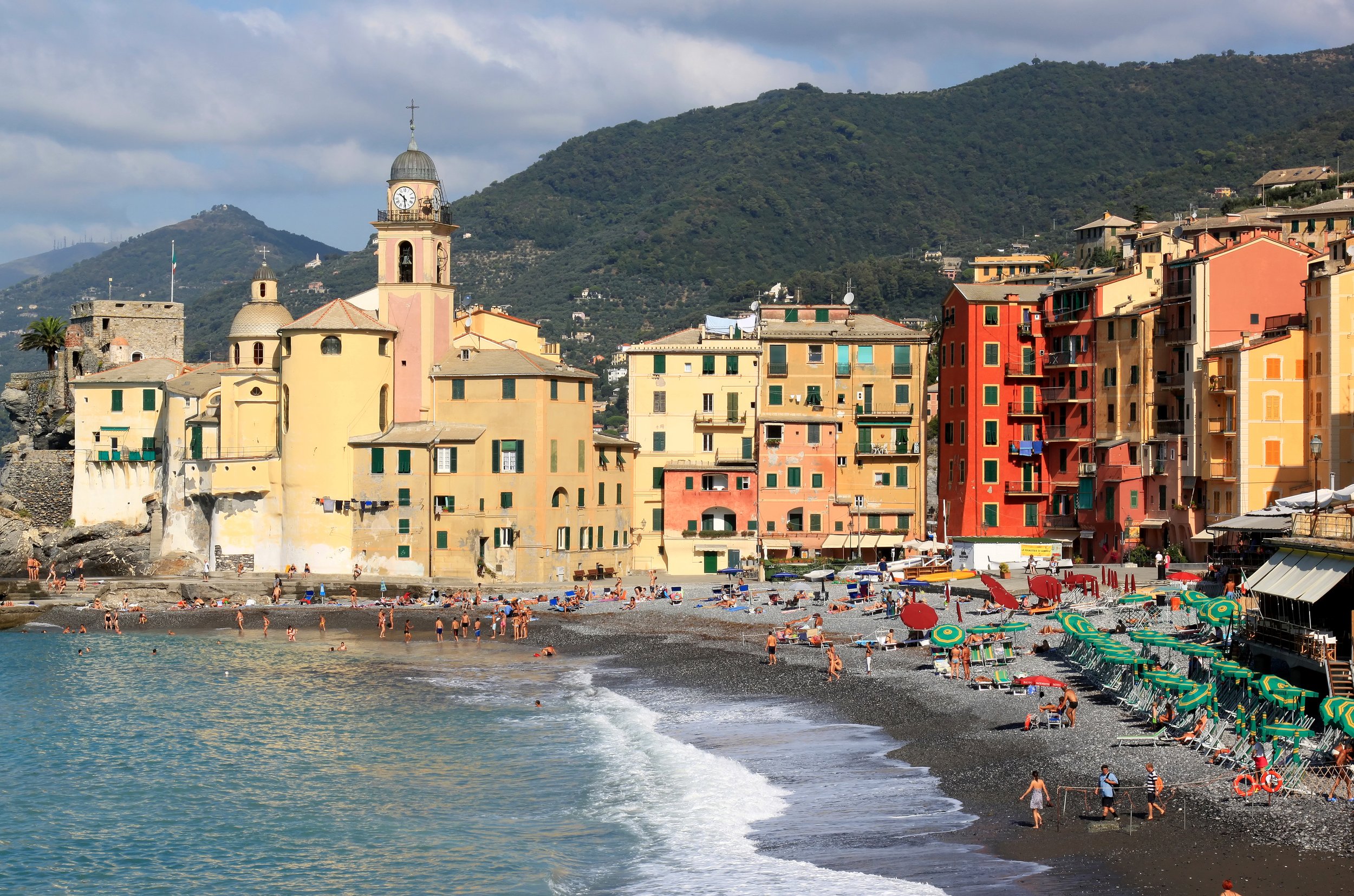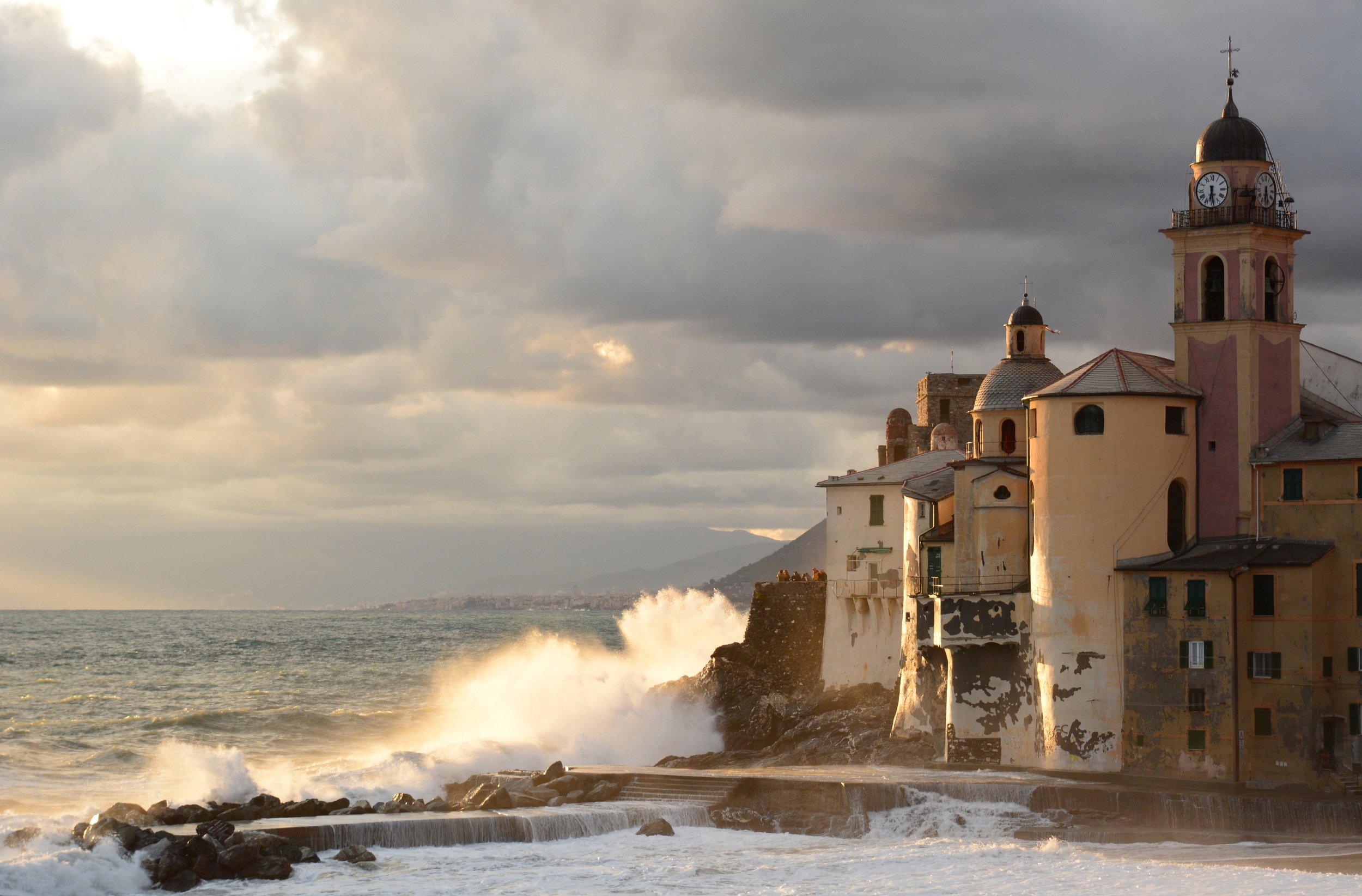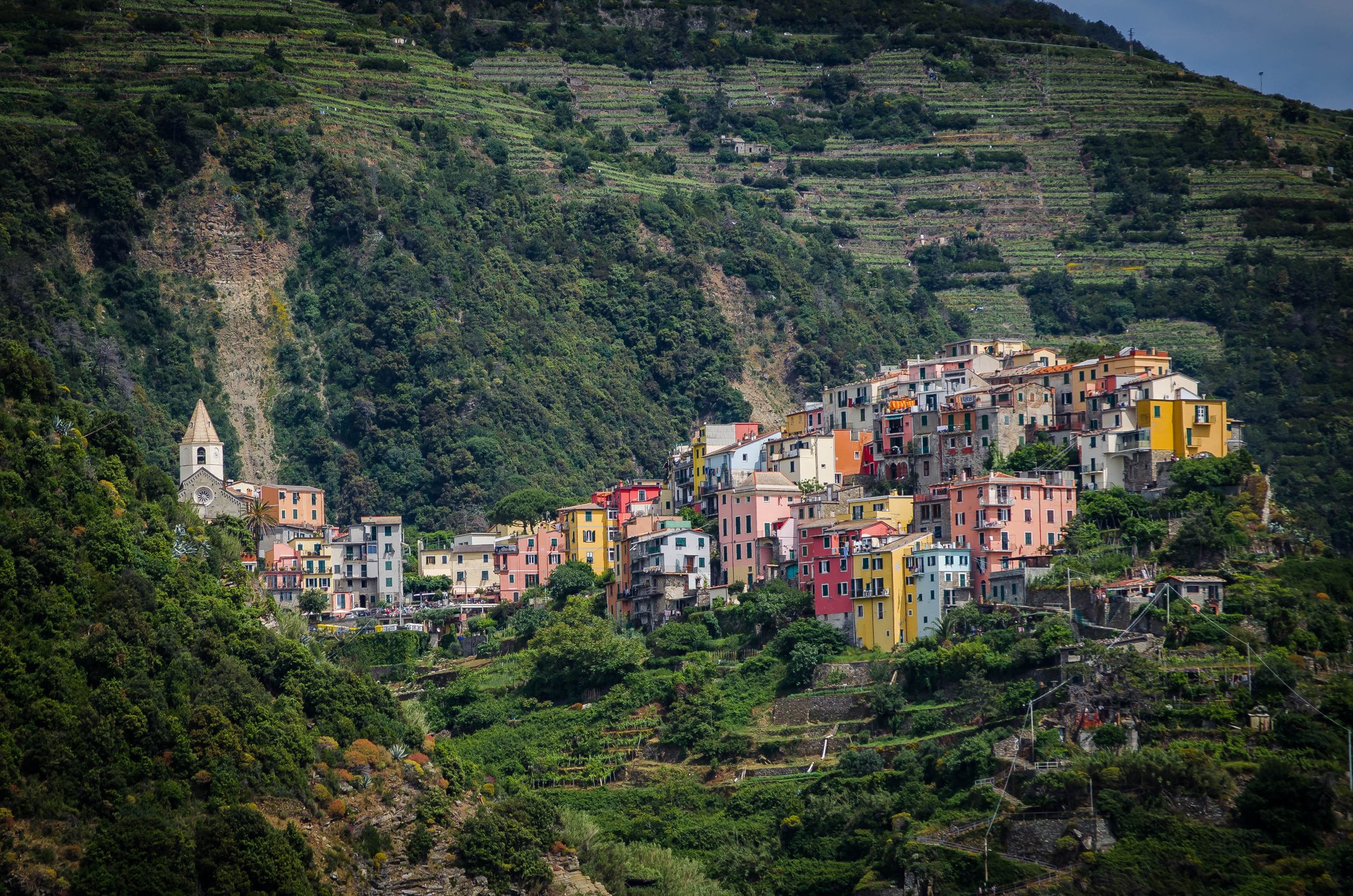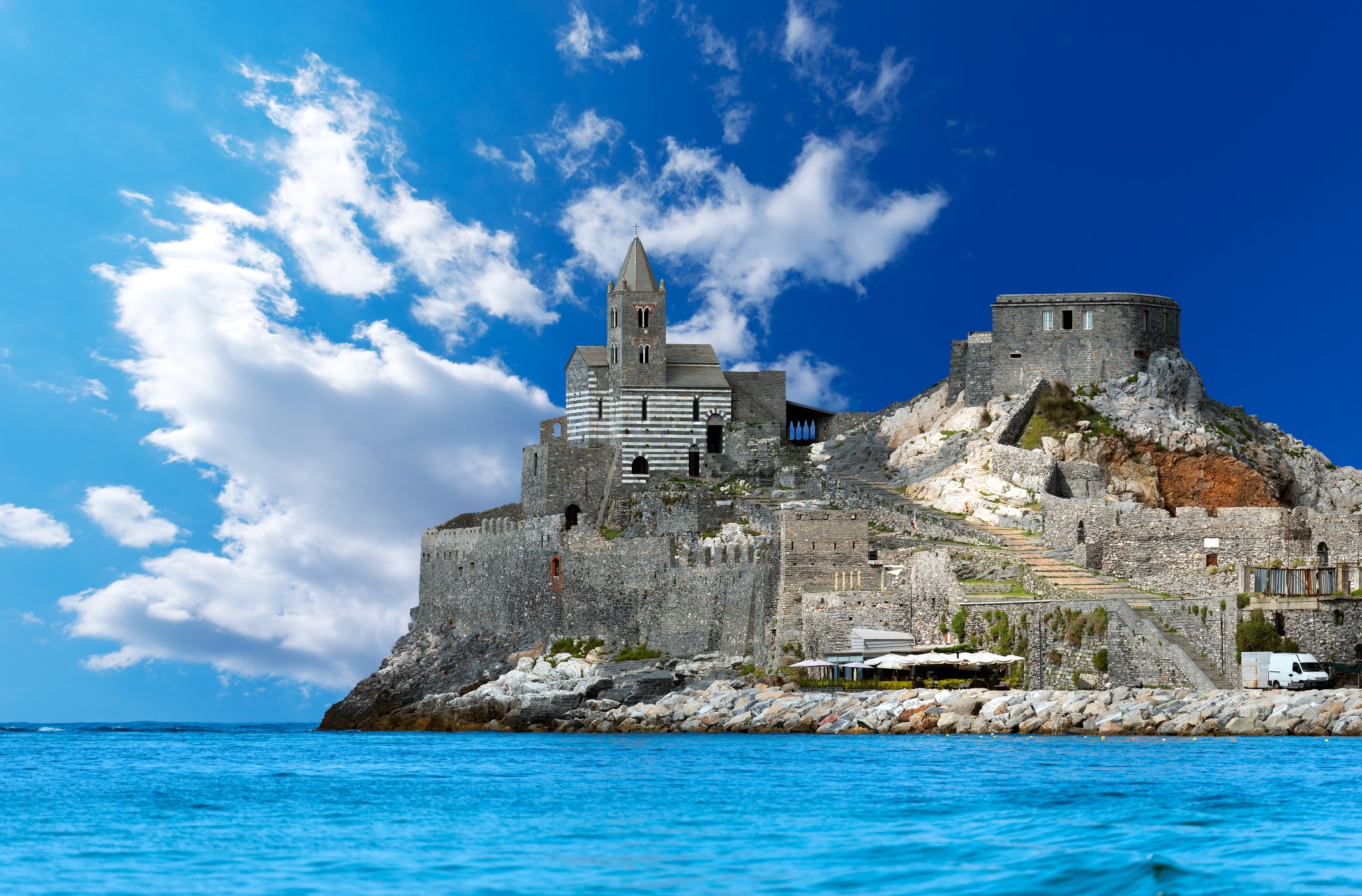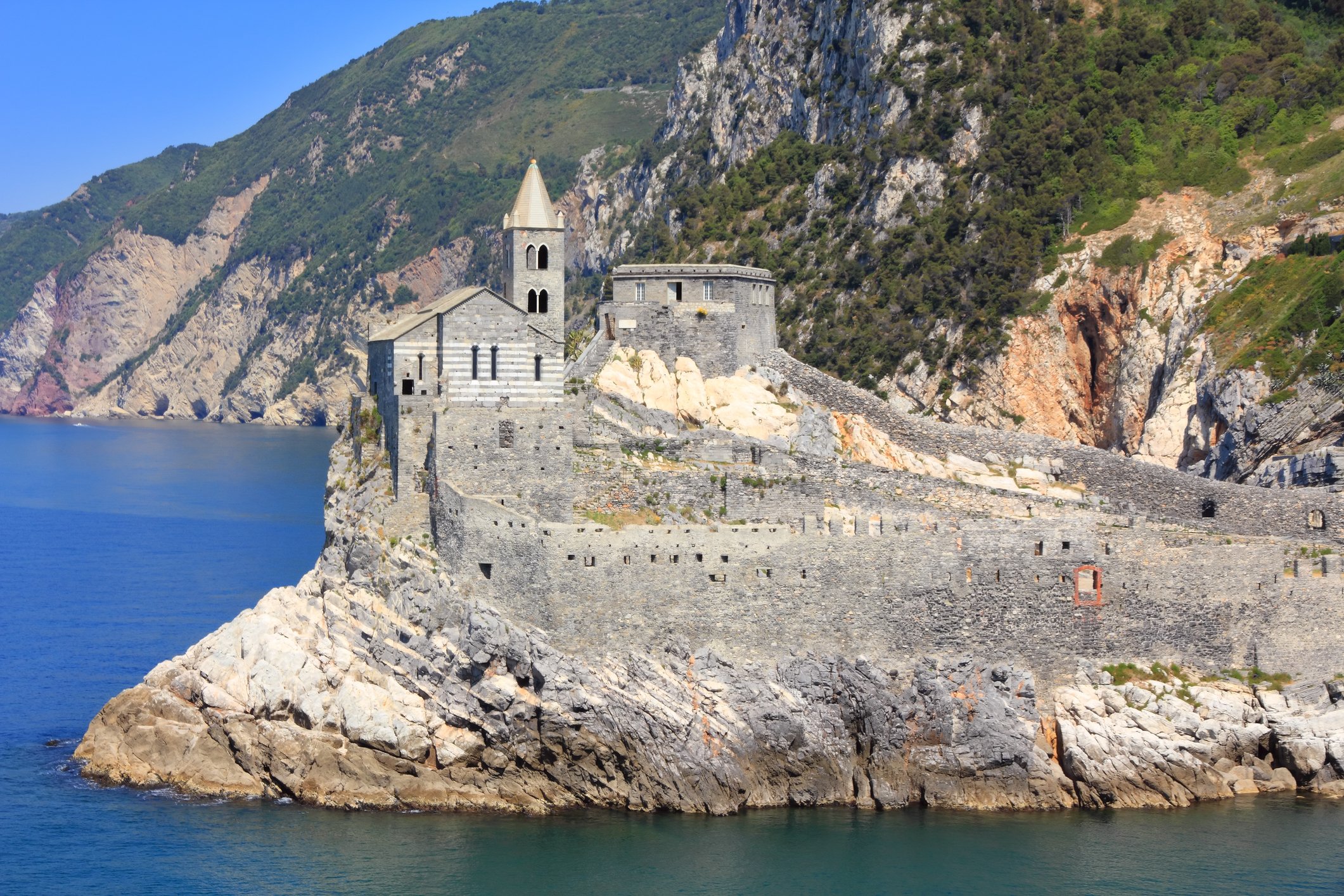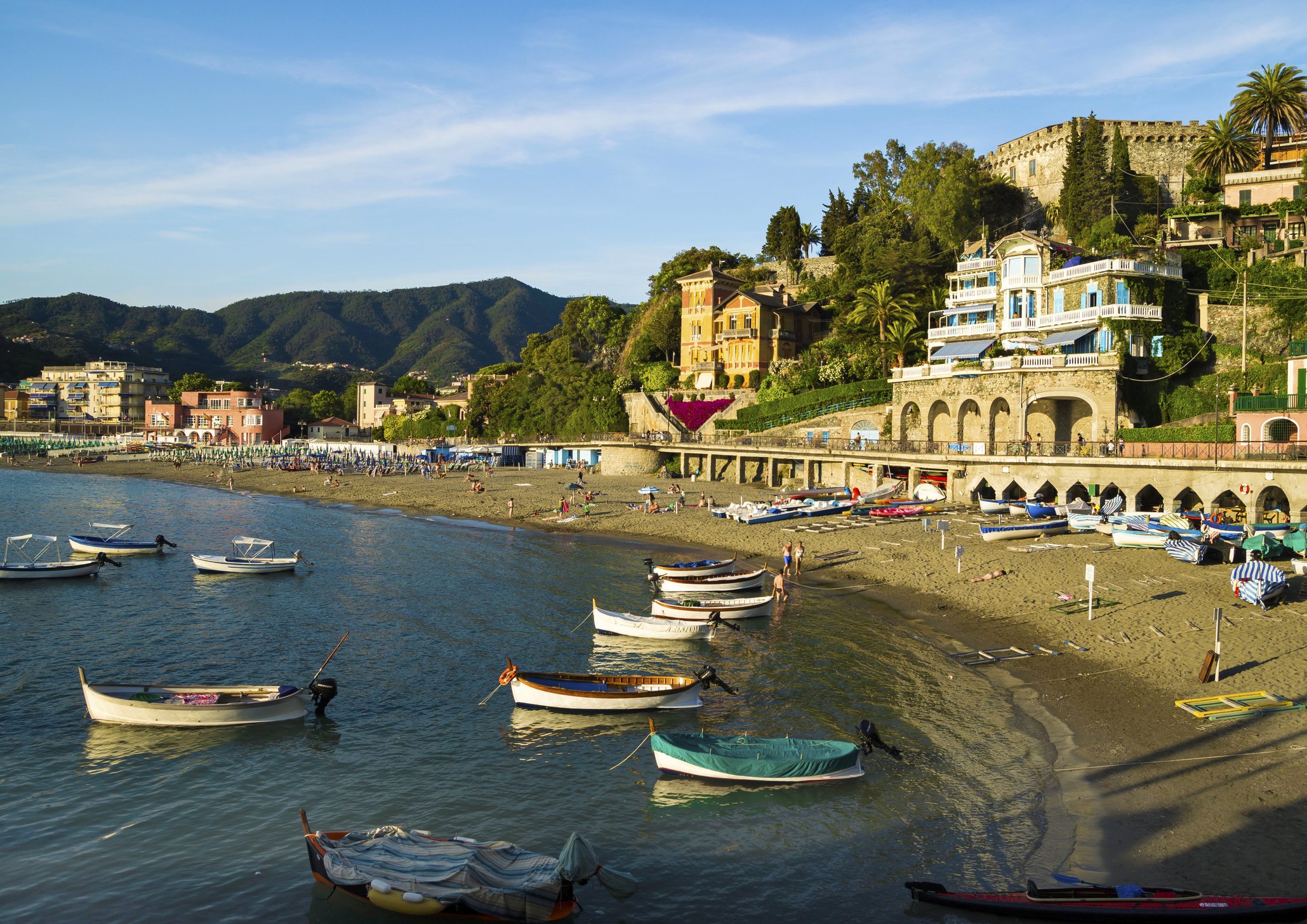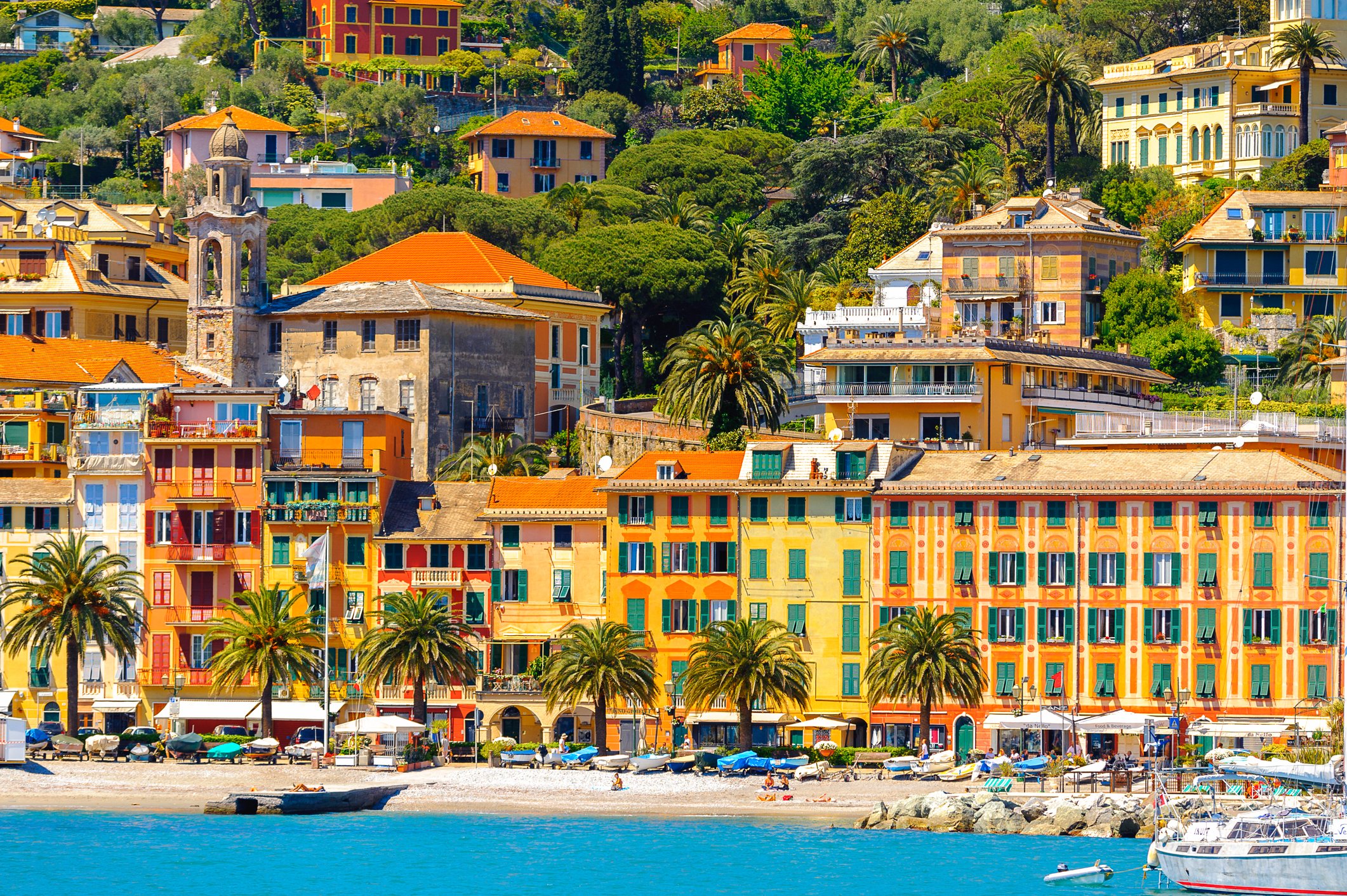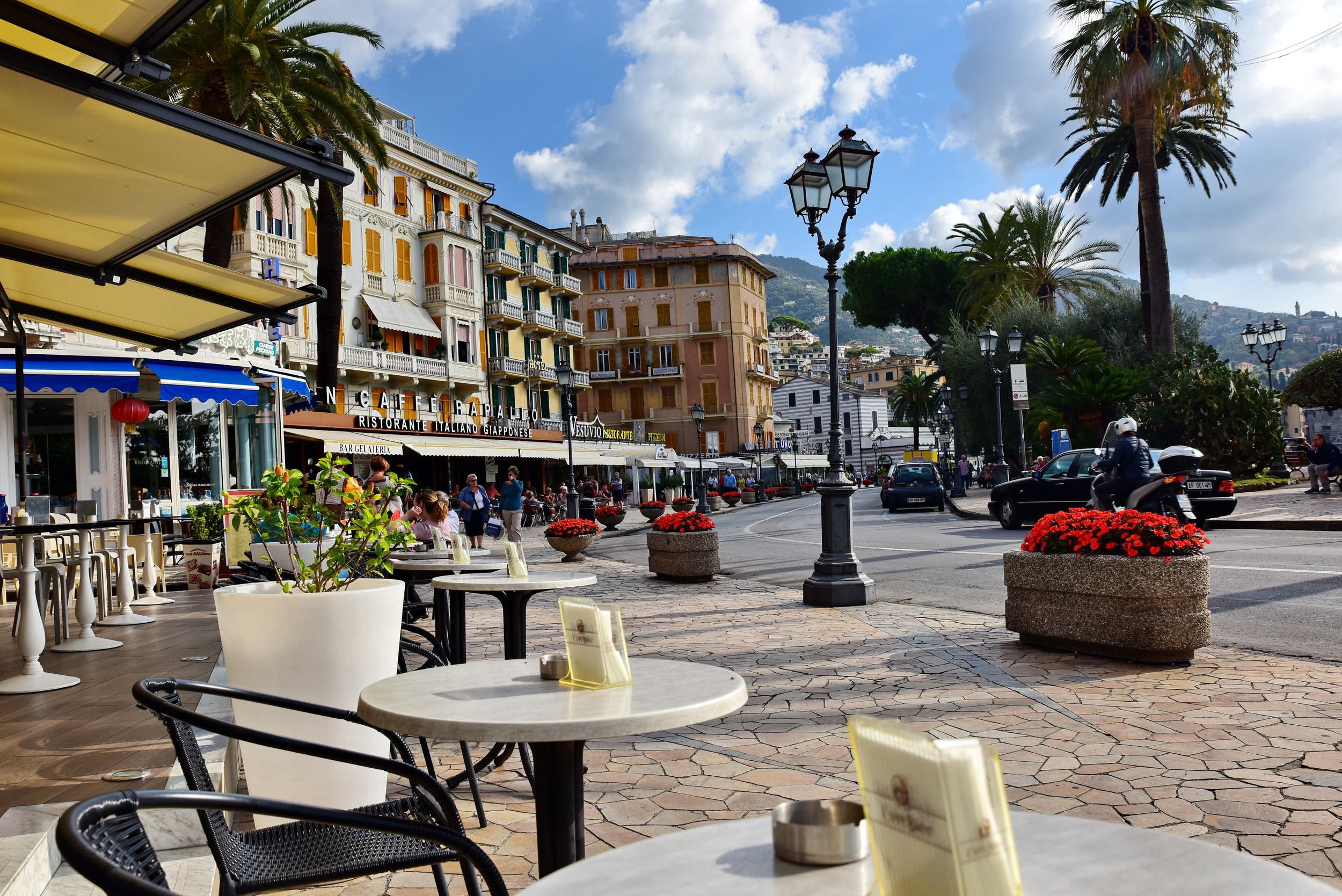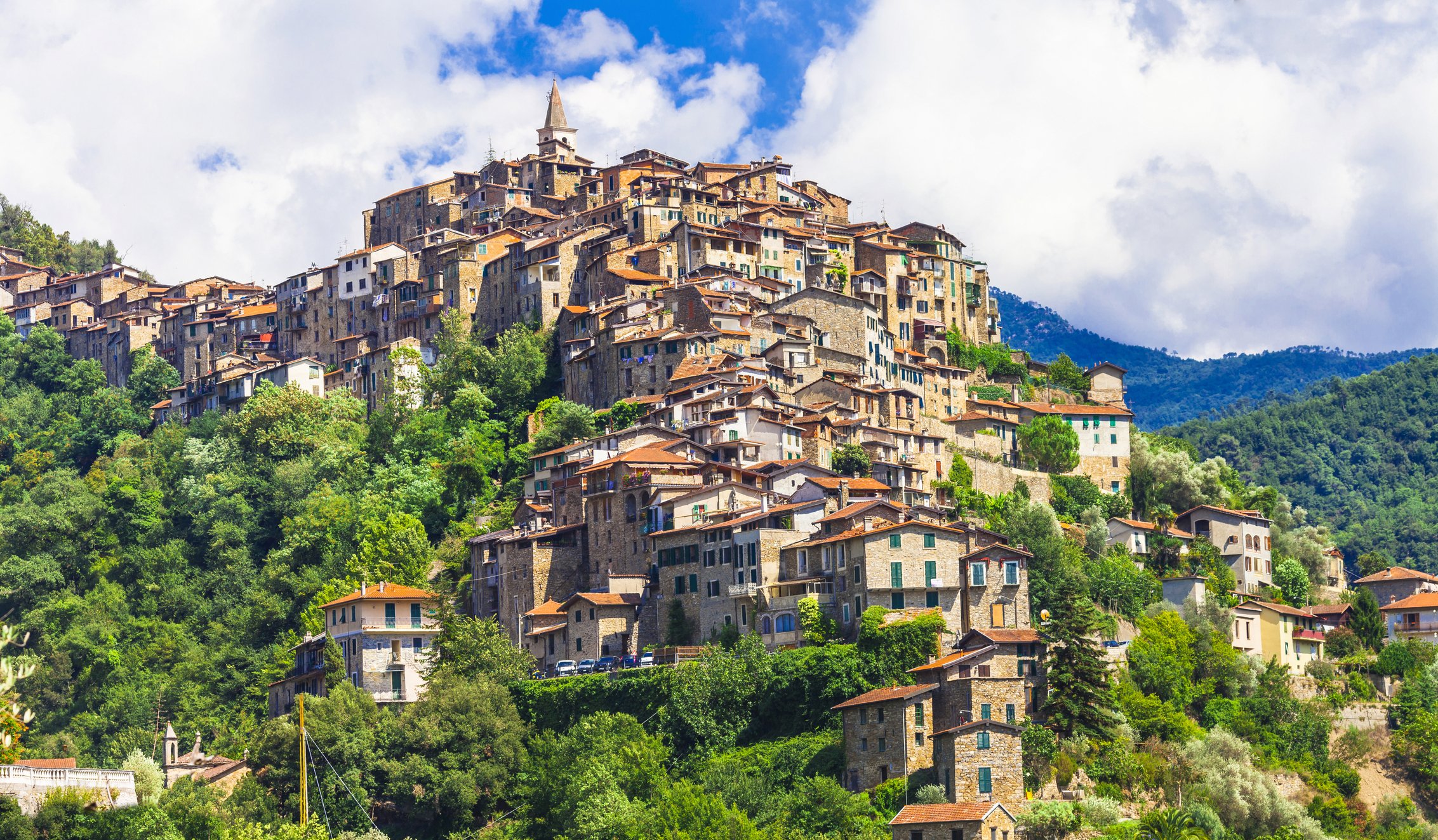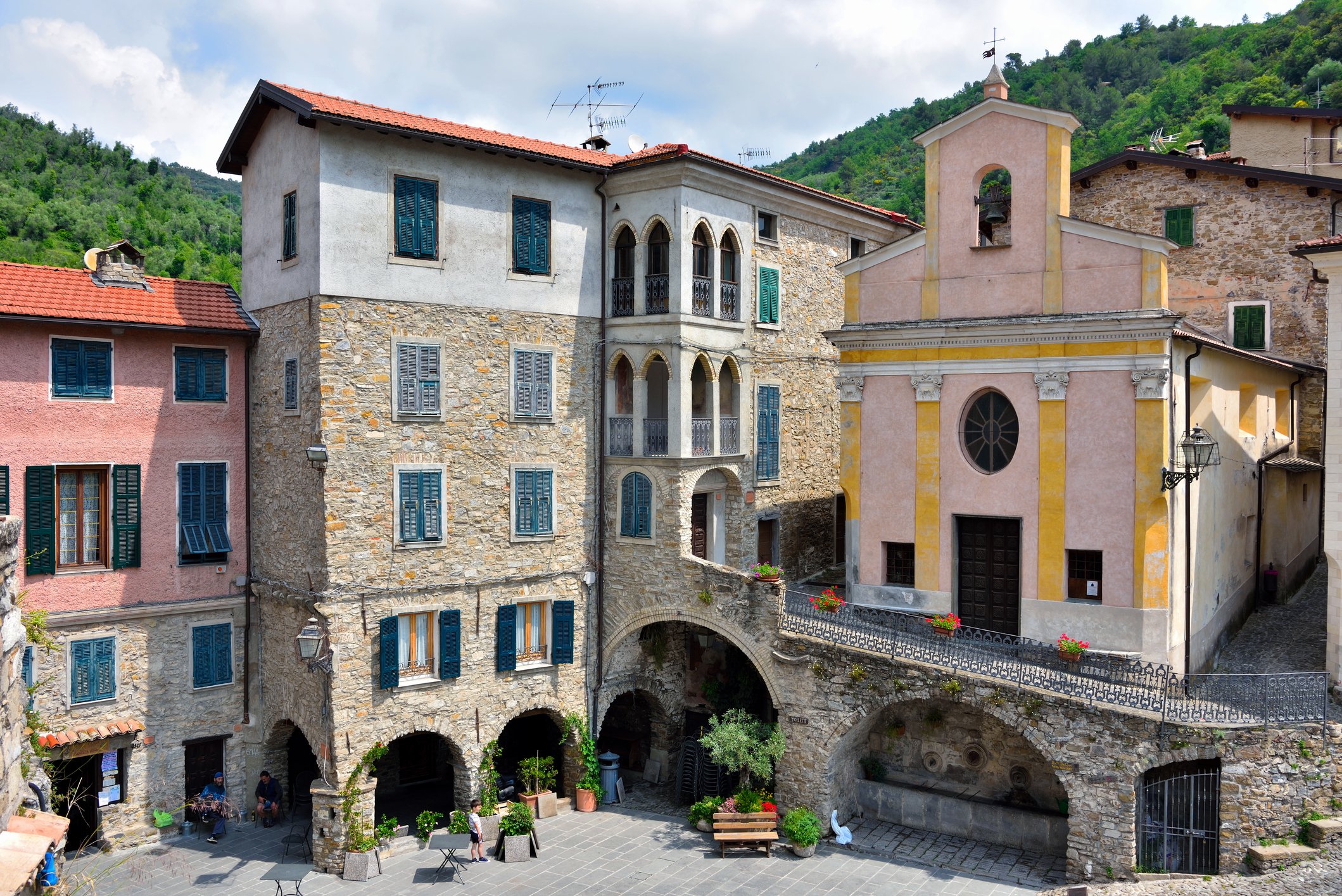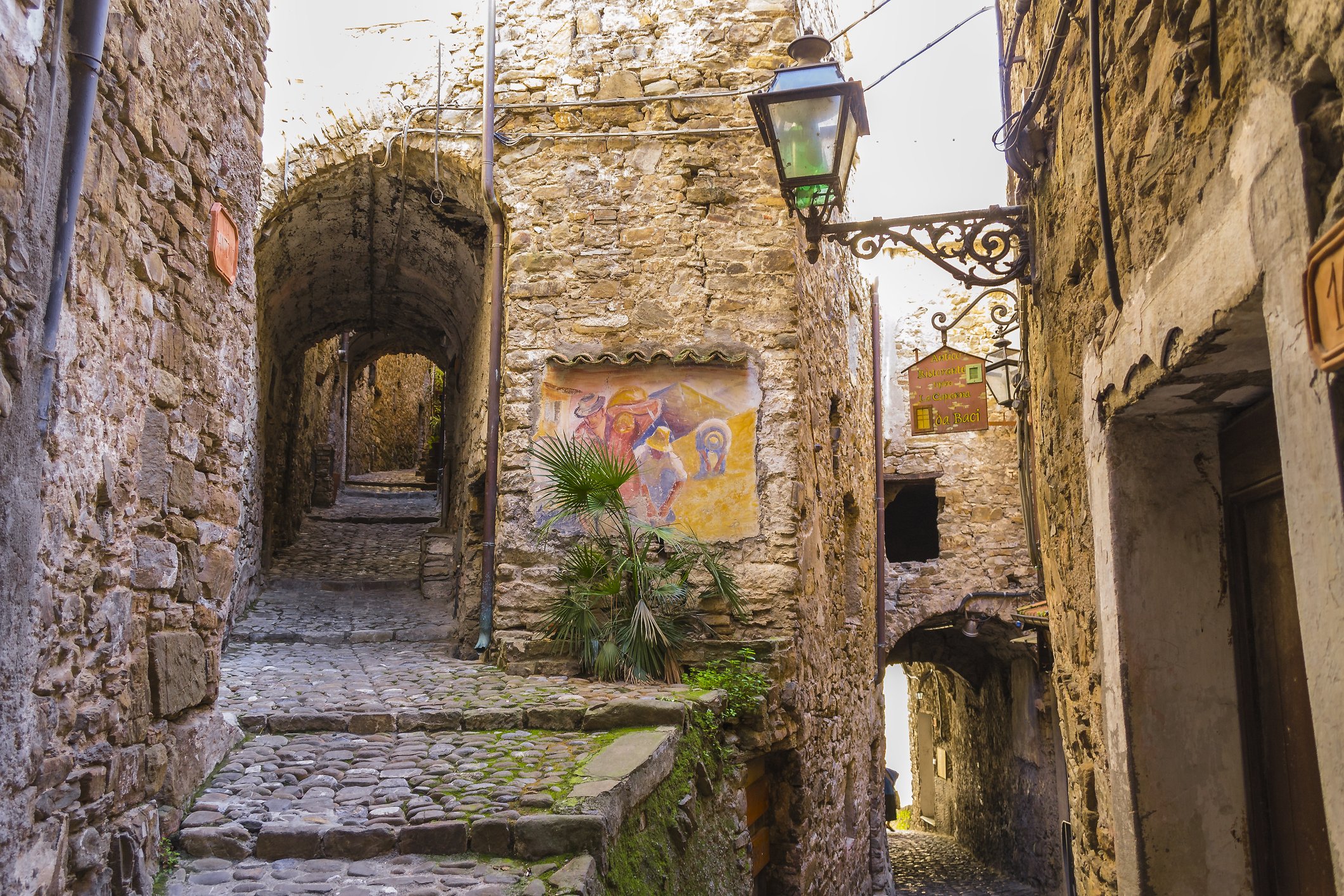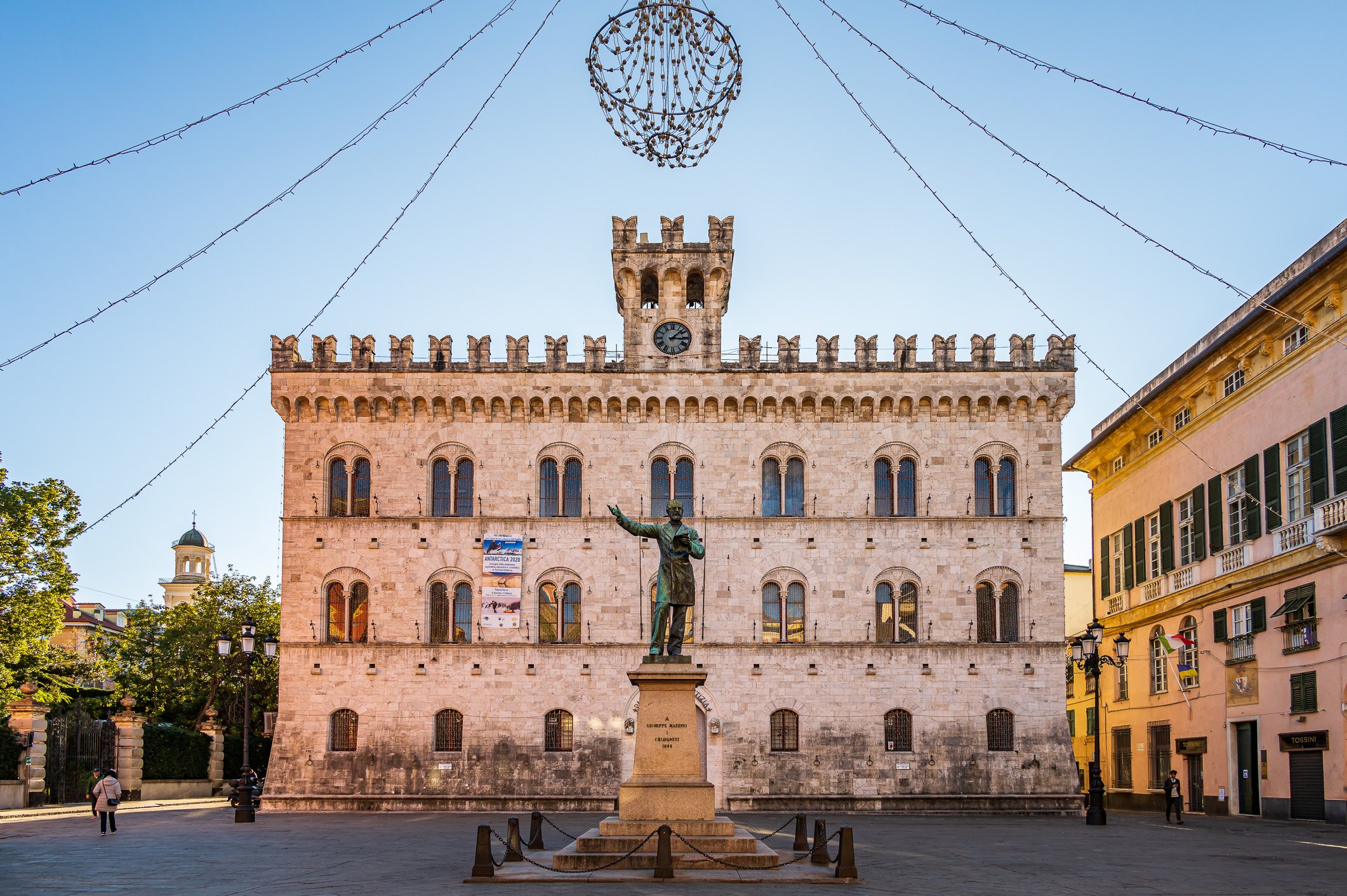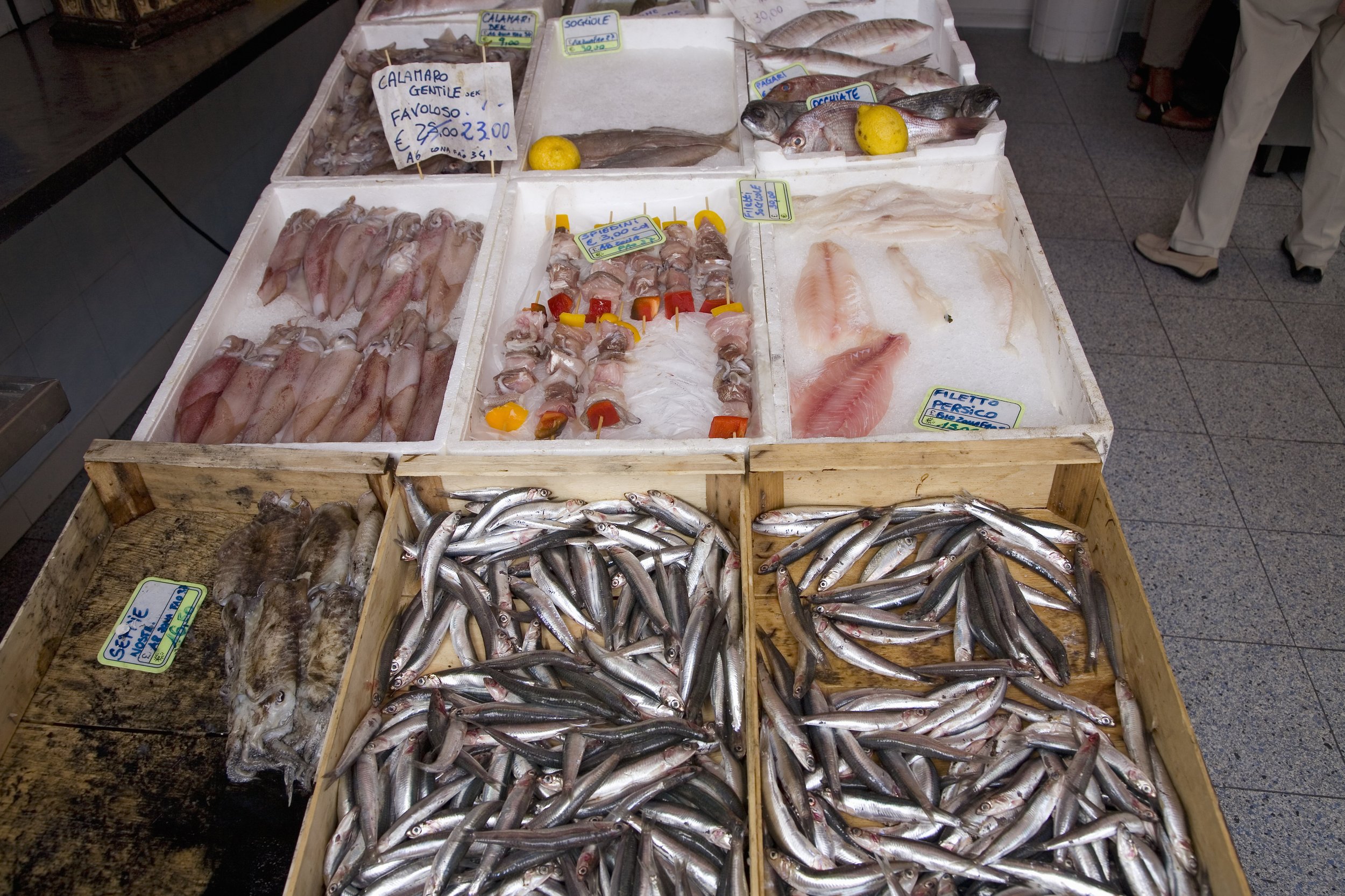Liguria
When I think of Liguria, the first word that comes to mind is “unforgettable!” This is the picturesque Italian Riviera where people from all over the world vacation during the summer on the pristine beaches, dine on fresh gifts from the sea, stroll along the paved beach paths, hike the mountains of the precariously perched sea villages, take water taxis from town to town along the coast, soak up the sun and fresh, welcome breeze of the Mediterranean Sea. During the winter, the atmosphere imbues serenity at times, with fewer tourists while rough waves crash against the cliffs with thunderous claps.
Must See Towns
There are numerous beautiful and historic places to see in Liguria whether it is a coastal village or inland town. I suggest you choose a town or a village as your base and take the train and water taxis to explore the region. Here are some of my favorite places to explore in Liguria: Chiavari, Rapallo, Camogli, Porto Venere, Portofino, Cinque Terre in the Spring, Santa Margherita Ligure, Sestre Levante, and San Remo. If you are in the mood for a large city, visit Genoa where so much of the modern world owes its discovery, thanks to the banks and financiers who financed the age of exploration in the 14th and 15th centuries.
Highlights of Ligurian Towns
Chiavari is one of my favorite towns as a home base in Liguria. It is on a bay, with a long, paved extra-wide sidewalk the length of the perimeter of the beach with numerous cafes, modern art and fountains. I rarely hear languages other than Italian when visiting Chiavari, except at the hotels. The city offers many types of accommodations and prices to meet a variety of budgets and preferences. One of my favorites is the Hotel Monte Rosa. I like the convenience and central location of the train station, the daily open market, numerous coffee shops with fabulous pastries, some with candy galore, several trattorias, a local theater, porticoes, many family-run shops carrying clothing, hats, gloves, sundries, perfumes, home goods and the fabulous trattoria, Da Vittorio.
Rapallo is another captivating town known for its picturesque setting and rich history. Located just a few kilometers east of the chic Portofino, Rapallo offers a mix of charm and elegance with a more laid-back and accessible vibe. The seaside promenade is lined with palm trees, offering beautiful views of the Gulf of Tigullio. It's perfect for a leisurely walk or enjoying an evening gelato. Take the cable car up to the Sanctuary of Our Lady of Montallegro (Santuario di Nostra Signora di Montallegro) for breathtaking views over the town and the coastline. The sanctuary itself is a place of pilgrimage, dating back to 1557. The town’s historic center is vibrant with shops, cafes, and restaurants. The narrow streets and quaint architecture give Rapallo a distinctive Italian Riviera character. Rapallo is home to one of the oldest golf courses in Italy, established in 1931. The town also has excellent tennis facilities, making it a popular destination for sports enthusiasts. Rapallo celebrates several festivals throughout the year, including the spectacular fireworks display for the Feast of Our Lady of Montallegro in July, which attracts many visitors. The town has a rich cultural life with various galleries and venues hosting regular exhibitions and concerts. The Lace Museum (Museo del Merletto) showcases the intricate lacework that is part of the area's traditional crafts. In addition to being a serene seaside resort, Rapallo serves as a great base to explore the surrounding Ligurian coast, including Portofino and Cinque Terre.
Camogli is a charming, brightly colored small seaside fishing village, with a small beach (of pebbles) a few fabulous trattorias and cafes. It is one of the smallest villages along the sea, just 20 minutes from Chiavari by train, and lesser known and therefore less traveled than its neighbors. Located near the waterfront, the Basilica of Santa Maria Assunta dates back to the 12th century. It's known for its elegant facade and impressive interior, which includes a large frescoed dome. The Dragonara Castle (Castello della Dragonara) overlooks the harbor. This castle has been a strategic fortress, a residence, and even a youth hostel. Every second Sunday in May, Camogli celebrates its fishing heritage with a huge festival where a gigantic frying pan is used to cook fish for the crowd. It is called the Sagra del Pesce. If you are in the area, don’t miss it! Accessible by boat from Camogli, you can explore the ancient San Fruttuoso Abbey which is set in a secluded cove and offers a fascinating glimpse into the region’s past. The area also offers great hiking and diving opportunities. The hike to Portofino Vetta is particularly popular.
Santa Margherita Ligure is another Ligurian gem, lively yet refined, between Rapallo and Portofino. I enjoy strolling along the palm tree-lined promenade along the waterfront. Santa Margherita Ligure has several attractive beaches, ranging from sandy stretches to private beach clubs where you can rent a sunbed and umbrella for the day. The clear waters are excellent for swimming and other water activities. For a peaceful walk with stunning views of the coastline, walk to Villa Durazzo, a 17th-century villa with a beautiful garden. The town's center is characterized by quaint streets and historic buildings. You can explore a variety of shops, boutiques, and cafes. There is a notable baroque church located in the town center called the Church of Santa Margherita d’Antiochia. It features an ornate interior with several artworks and a beautifully decorated facade. The town is a great base for various outdoor activities, including hiking, sailing, and diving. Numerous trails lead into the hills and along the coast, particularly towards Portofino and the Cinque Terre. Santa Margherita Ligure hosts various festivals and events throughout the year, including a famous sailing regatta and a lively annual festival dedicated to its patron saint, which includes processions, fireworks, and music.
San Remo is known not only for its beauty as a gorgeous Italian Riviera town, but also as the city that hosts the annual San Remo Music Festival at the Ariston Theater. Since its inception in 1951, the festival has served as a springboard for many singers who later achieved both national and international fame. Here are some notable artists whose careers were significantly boosted by their performances at Sanremo:
Andrea Bocelli: He gained significant recognition in 1994 when he won the newcomers' section of the festival with the song "Il mare calmo della sera."
Eros Ramazzotti: Winning the newcomers' section in 1984 with the song "Terra promessa" helped launch his career, leading to international success.
Laura Pausini: She won the newcomers' section in 1993 with her debut song "La solitudine," which became an international hit and kickstarted her global career.
Domenico Modugno: One of the most memorable performances in Sanremo history was his 1958 entry with "Nel blu dipinto di blu" (also known as "Volare"). Although it only placed third at the festival, it went on to achieve worldwide fame.
Gigliola Cinquetti: At only 16, she won the festival in 1964 with "Non ho l'età," which also won the Eurovision Song Contest that year, catapulting her to international stardom.
Toto Cutugno: Known for his 1980 win with "Solo noi," Cutugno's career was further enhanced when he won the Eurovision Song Contest in 1990 with another song he first performed at Sanremo, "Insieme: 1992."
Massimo Ranieri: His career was revived in the 1980s after winning Sanremo twice, first in 1988 with "Perdere l'amore," and again in 1989 with "Ti parlerò d'amore."
Zucchero: His 1985 performance of "Donne" at the festival helped to solidify his reputation in the Italian music scene.
San Remo is split between the old town called (La Pigna), The Pine Cone, characterized by its tight and winding medieval streets, steep stairways, and charming architecture and the modern beachfront with shopping on Corso Matteotti and the Casino di San Remo which has been the cities landmark since it opened in 1905. This has been a popular destination for the rich and famous and aristocracy for centuries. Reflecting San Remo's cosmopolitan past, the Russian Orthodox Church is notable for its onion domes and rich decorations. It was built to serve the Russian aristocracy who frequented the Riviera in the early 20th century. Villa Nobel is also a popular stop. This is the last residence of Alfred Nobel, the inventor of dynamite and founder of the Nobel Prizes. His home is now a museum. Visitors can explore the villa and its beautiful gardens, learning about Nobel's life and work. Like so many cities on the Italian Riviera, San Remo has not one but several seaside promenades, such as Corso Imperatrice, lined with exotic gardens and elegant hotels. The promenade is ideal for walking, biking, and enjoying the stunning sea views. San Remo is at the western end of a coastal bike path that runs through several towns. This route offers scenic views of the Mediterranean and is a popular way to explore the region. San Remo has several beautiful beaches, ranging from sandy to pebbly shores. They are great for relaxation, swimming, and enjoying various water sports. Porto Vecchio and Porto Sole are the main harbors where you can watch luxurious yachts and traditional fishing boats, or even embark on a sailing or fishing trip. If you plan to stay for a night or two, I highly recommend the Hotel San Remo Royal Hotel. Email: reservations@royalhotelsanremo.com
Porto Venere is a very small, ancient coastal town that is part of a UNESCO World Heritage site that includes Cinque Terre, and the Islands (Palmaria, Tino, and Tinetto). The area around Porto Venere has been inhabited since prehistoric times. Later, it became a base for the Romans, who named it after Venus, the goddess of love. This beloved town is instantly recognizable by San Pietro Church which is perched dramatically on a rocky promontory. The church (like so many churches in Italy) is built upon the remains of a Roman temple dedicated to Venus, from whom the town gets its name. Constructed in the typical Genovese Gothic style, the church offers breathtaking views of the sea and coastline. Byron's Grotto is a rocky inlet renowned for its beauty and dramatic scenery. This is named after the English poet Lord Byron, who is said to have swum from here to visit his friend Percy Bysshe Shelley at San Terenzo. The grotto is off to the right of the path leading to San Pietro Church. Overlooking the town, you’ll see the Castle of Doria which is a massive fortress dating back to the 12th century. It was built for defensive purposes by the Genoese and provides panoramic views of the Gulf of Poets and the surrounding areas. The picturesque row of tall, narrow houses facing the harbor is known as the Palazzata. Wander through the narrow streets of the old town behind these houses to discover charming shops, cafes, and hidden squares.

